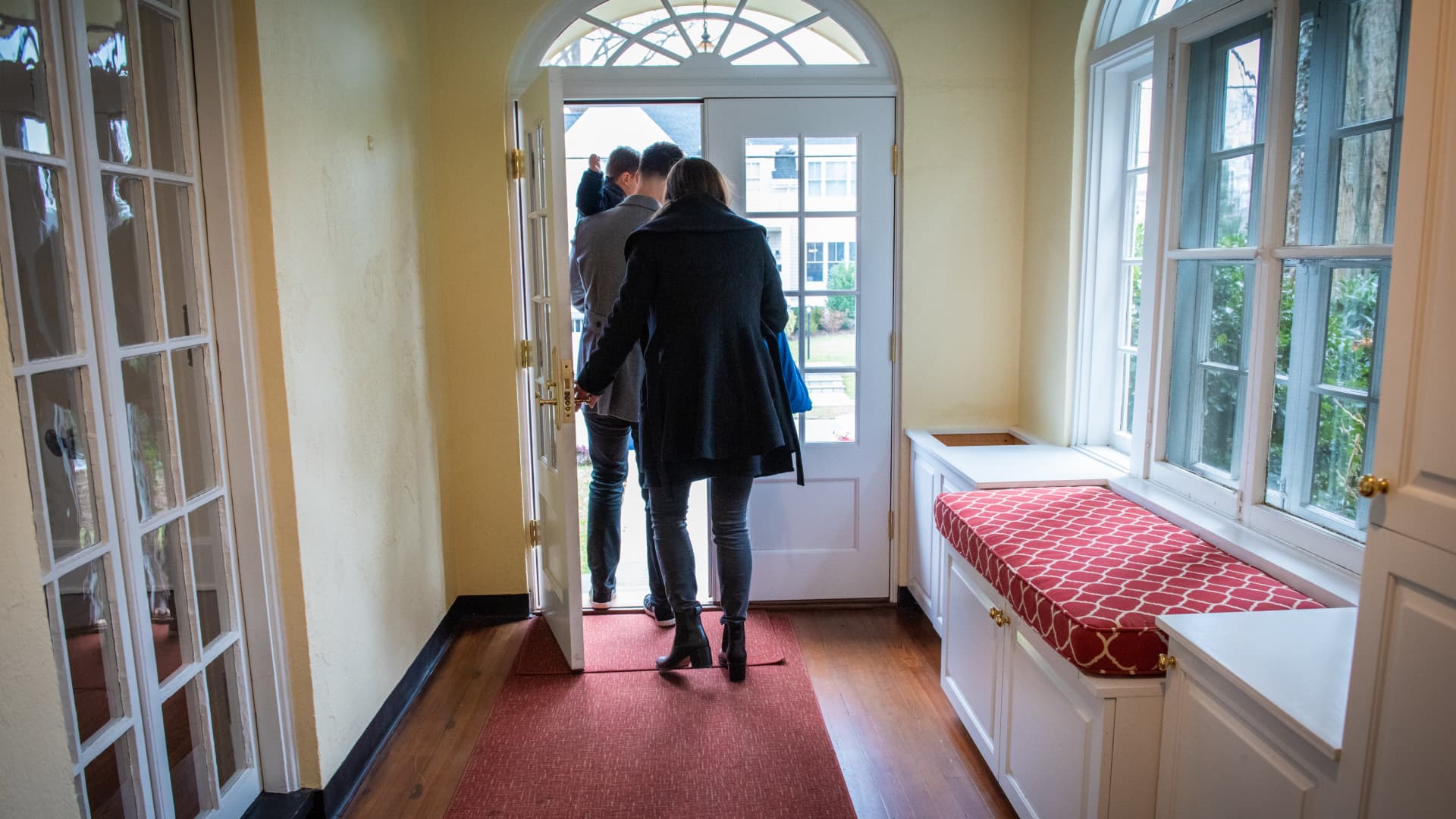As high home prices and interest rates push up monthly mortgage payments, it’s harder for many consumers to even get a mortgage in the first place.
Last year, lenders denied loan applications due to “insufficient income” more often than any other point since records began in 2018, according to a new report from the Consumer Financial Protection Bureau.
Overall, 9.1% of home purchase applications among all applicants were denied in 2022, the consumer watchdog agency reported, higher than 8.3% in 2021 but a marginal decrease from 9.3% in 2020. Refinance applications were more frequently rejected, at a rate of 24.7% in 2022 — up sharply from 14.2% in 2021.
Insufficient income represented more than 50% of of denials for Asian American applicants, 45% for Black and Hispanic applicants, and approximately 40% for white applicants — up from below 40% for each of these groups in 2018.
More from Personal Finance:
How return of student loan payments could shake the economy
Latino student borrowers face extra challenges as payments restart
60% still living paycheck to paycheck as inflation hits workers’ wages
The CFPB also reported that the average cost of a monthly mortgage payment increased 46%, to $2,045 in December 2022, from $1,400 during December 2021. Given the rising cost of payments and mortgage rates — both of which have responded to the Federal Reserve’s rate hikes — “none” of the recent trends in income-based denials should “be a surprise,” said certified financial planner Barry Glassman, founder and president of Glassman Wealth Services in McLean, Virginia.
“In most cases, income did not increase at the pace of average mortgage payments,” said Glassman, who is a member of CNBC’s FA Council.
‘People are feeling squeezed on all sides’
The higher rates of income-based mortgage denials are not only attributable to higher mortgage rates, but also higher home prices, Bankrate senior industry analyst Ted Rossman said.
“It’s really a double whammy, especially for first time buyers who don’t have any equity that they can trade in,” he said.
It doesn’t help that consumers have been taking on more debt as inflation puts pressure on their budgets.
Rossman added that lenders are looking for applicants’ housing costs to make up no more than 28% of their gross income. Lenders often use a guideline called the 28/36 rule, which looks at how much of your income housing expenses and other debt take up. Ideally, your mortgage, property taxes and insurance should represent less than 28% of gross monthly income, and total debt — including your mortgage, credit cards and auto loans — shouldn’t exceed 36%.
To gauge how much house you can afford before you apply for a mortgage, focus on “three big letters” — DTI, or debt-to-income ratio, said CFP Ted Jenkin, the CEO of oXYGen Financial in Atlanta.
If your overall monthly debt, including auto loan, student loan and mortgage payments, totals more than 40% of your total income, you have a greater chance of being denied. If that’s the case, you may need to adjust your housing expectations, said Jenkin, who is also a member of CNBC’s FA Council.
DTI ratios are currently higher than 40% among Hispanic and white applicants, according to the CFPB.
Lenders also look at applicants’ credit scores, and the CFPB data points to that as another potential trouble area. The median credit score of applicants for loan refinances is now lower than the median credit score of applicants for home purchase loans, reversing a recent trend, the CFPB reported.
“I think people are feeling squeezed on all sides,” Rossman said. “And from a credit scoring standpoint, too, that’s another big part of this whole discussion.”
Consumers should monitor their credit scores and take steps to keep them in top shape. The FICO scoring model used by many lenders runs from 300 to 850, and the higher the better. Depending on the lender, you might need a score of at least 600, or as much as 660, to qualify for a loan, and a 760 or better to get the best-available rate.
“The difference between a 575 FICO score and a 675 FICO score could be as much as 1% on your mortgage rate,” Jenkin said.
That higher rate means a bigger monthly mortgage payment, he said, “and that could put you into the category of having insufficient income.”
